Peridot
(Peridot, Forsterit und Dunilit sind Varietäten des Minerals Olivin)
Allgemein bekannt
seltener (sogenannte Sammlersteine)
ganz selten (Raritäten)
relativ seltenes organisches Material
|
Chemische Formel Peridot: (Mg, Fe)2SiO4
Mineralklasse: Silikate
Peridoot, Peridootti, Péridot, Peridoto, Perydot, Перидот, ペリドート, פרידוט Oliviin, Oliviini, Olivijn, Olivín, Olivina, Olivină, Olivinas, Olivine, Olivino, Oliwiny, Оливин, ओलीवाइन, カンラン石, অলিভিন, 감람석 Kristallsystem: orthorhombisch Mohs-Härte: 6,5 - 7 Dichte (g/cm3): 3,27 - 3,37 Refraktions-Index: 1,650 - 1,703 Farben: goldgrün, gelbbraun bis schwarz Glanz: Glasglanz Spaltbarkeit: unterschiedlich Transparenz: transparent - durchscheinend Brechungsindex: 1,635 - 1,772 (biaxial +) Fluoreszenz: - Pleochroismus: sehr schwach: farblos bis blassgrün Größter Kristall: 319 ct (Myanmar) Fundorte: Ägypten, Äthiopien, China, Frankreich, Kanada, Myanmar, Norwegen, Pakistan, Spanien, USA Name: Olivin: von der olivgrünen Farbe des Minerals; Peridot: evtl. vom griechischen Wort "peridona" ("Fülle bzw. Reichtum gebend") |
|
Peridot
Größe: 1,18 x 1,9 x 1,16 cm Gewicht: 23,48 ct Herkunft: Mogok / Myanmar Foto mit freundlicher Erlaubnis von © www.wildfishgems.com |
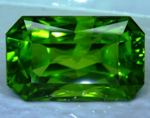 |
|
Peridot Mineral
Herkunft: Kaghan / North-West Frontier Prov. / Pakistan Foto mit freundlicher Erlaubnis von © www.exceptionalminerals.com |
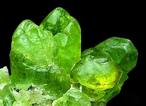 |
|
Peridot
Gewicht: 43,27 ct Herkunft: Mogok / Myanmar Foto mit freundlicher Erlaubnis von © www.americanthai.com |
 |
|
Peridot Anhänger mit Tansanit
Gewicht: Peridot: 8,03 ct; Tansanit: 1,65 ct Diamanten: total 0,31 ct Gold: 18K Weißgold Foto mit freundlicher Erlaubnis von © www.collectorfinejewelry.com |
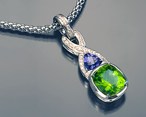 |
|
Peridot Mineral
Herkunft: Naran-Kagan Tal / Kohistan / Pakistan Foto mit freundlicher Erlaubnis von © www.irocks.com |
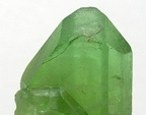 |
|
Peridot
Gewicht: 1,64 ct Herkunft: St. John's Insel / Ägypten Foto mit freundlicher Erlaubnis von © www.irocks.com |
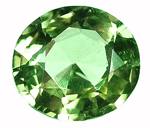 |
|
Peridot
Gewicht: 2,05 ct Herkunft: St. John's Insel / Ägypten Foto mit freundlicher Erlaubnis von © www.irocks.com |
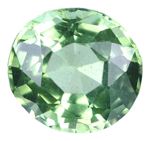 |
|
Peridot
Gewicht: 0,85 ct Herkunft: Arizona / USA Foto mit freundlicher Erlaubnis von © www.irocks.com |
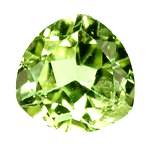 |
|
Peridot Anhänger
Gewicht des Steines: >90 ct Herkunft des Steines: St. Johns Mine / Yavapai County / Arizona / USA Material: Gold (18K), 30 Brillanten Foto mit freundlicher Erlaubnis von © www.wolfpiontek.de |
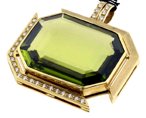 |
|
Peridot
Größe: 0,87 x 0,70 cm Gewicht: 1,90 ct Herkunft: Myanmar Foto mit freundlicher Erlaubnis von © www.thegemtrader.com |
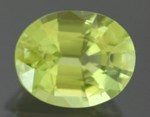 |
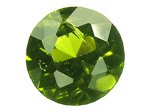 |
|
Peridot Stern
Größe: 1,45 x 1,27 x 1,18 cm Gewicht: 4,41 ct Herkunft: Pyaung Gaung Mine / Bernardmyo / Mogok / Myanmar Foto mit freundlicher Erlaubnis von © www.crystal-treasure.com |
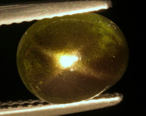 |
|
Chemische Formel Forsterit: Mg2(SiO4)
Mineralklasse: Silikate
Forsteriet, Forsterita, Forsterite, Форстерит, 苦土橄欖石, 橄欖石 Kristallsystem: orthorhombisch Mohs-Härte: 7 Dichte (g/cm3): 3,271 Spaltbarkeit: schlecht Farben: weiß, grau, hellgelb, grün Glanz: Glasglanz Transparenz: transparent - durchscheinend Brechungsindex: 1,635 - 1,670 (biaxial +) Fluoreszenz: - Pleochroismus: - Größter Kristall: 17 cm Fundorte: Ägypten, Deutschland, Finnland, Italien, Myanmar, Norwegen, Pakistan, Russland, Tansania, USA Erstbeschreibung: 1892 Name: zu Ehren des deutschen Naturforschers (und Begleiters von James Cook) Johann Reinhold Forster (1729 - 1798) |
|
Forsterit Mineral / Micromount
Herkunft: Ettringer Bellerberg / Ettringen / Eifel / Rheinland-Pfalz Foto mit freundlicher Erlaubnis von © Stephan Wolfsried Sammlung Willi Schüller. |
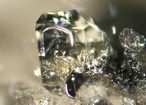 |
|
Forsterit
Gewicht: 1,60 ct Herkunft: Dattaw Mine / Mogok / Myanmar Foto mit freundlicher Erlaubnis von © www.gemfrance.com |
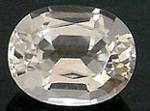 |
|
Forsterit
Größe: 0,98 cm Gewicht: 6,27 ct Herkunft: Kuh-i-Lal / Tajikistan Foto mit freundlicher Erlaubnis von © www.americanthai.com |
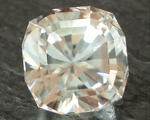 |
|
Forsterit Mineral / Micromount
Herkunft: Emmelsberg / Eifel / Deutschland Foto mit freundlicher Erlaubnis von © Stephan Wolfsried Sammlung Willi Schüller. |
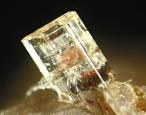 |
|
Forsterit
Gewicht: 3,54 ct Herkunft: Dattaw Mine / Mogok / Myanmar Foto mit freundlicher Erlaubnis von © www.gemfrance.com |
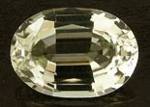 |
|
Forsterit Mineral
Herkunft: St. Johns Island (Zebirget) / Ägypten Foto mit freundlicher Erlaubnis von © www.mineralman.com |
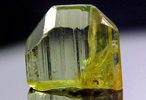 |
|
Chemische Formel Dunilit:
(Mg,Fe,Mn)2SiO4
Mineralklasse: Silikate
Dunilite, Duniliet Kristallsystem: orthorhombisch Mohs-Härte: 6,5 - 7,0 Dichte (g/cm3): 3,48 Farben: goldgrün Glanz: Glasglanz Transparenz: transparent - durchscheinend Brechungsindex: 1,677 - 1,718 (biaxial -) Spaltbarkeit: mittel - gut Fluoreszenz: - Pleochroismus: stark: braungelb - grüngelb Größter Kristall: ? cm Fundorte: Katukubura Berg / Kolonne / Embilipitiya / Sri Lanka Entdeckung: 1996 Erstbeschreibung: 1996 (Gunasekera ?) Name: zu Ehren des Entdeckers Dunil Palitha Gunasekera aus Ratnapura / Sri Lanka |
|
Dunilit Mineral
Größe: 1,20 x 1,31 x 0,28 cm Herkunft: Katukubura Berg / Kolonne / Embilipitiya / Sri Lanka Foto mit freundlicher Erlaubnis von © www.crystal-treasure.com |
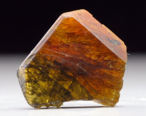 |
|
Dunilit
Gewicht: 0,17 ct Größe: 0,37 x 0,3 cm Herkunft: Katukubura Berg / Kolonne / Embilipitiya / Sri Lanka Foto mit freundlicher Erlaubnis von © www.kox-gems.com |
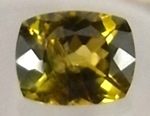 |
|
Dunilit
Größter bekannter geschliffener Dunilit Gewicht: 552,60 ct Größe: 65,1 x 47,3 x 23,0 mm Herkunft: Kolonne / Embilipitiya / Sri Lanka Foto mit freundlicher Erlaubnis von © www.cvs.fi |
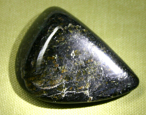 |
|
Chemische Formel Pallasit:
(Mg,Fe)2SiO4
Mineralklasse: Silikate
Pallasite, Pallasiet, Pallasyty, Палласит, 石鐵隕石 Kristallsystem: orthorhombisch Mohs-Härte: 6,5 - 7,0 Dichte (g/cm3): 3,27 - 3,37 Farben: goldgrün Glanz: Glasglanz Transparenz: transparent - durchscheinend Brechungsindex: 1,635 - 1,772 (biaxial +) Spaltbarkeit: unterschiedlich Fluoreszenz: - Pleochroismus: sehr schwach: farblos bis blassgrün Größter Kristall: ? cm Herkunft: In Meteoriten (Pallasite). Olivinkristalle in einer Matrix aus Nickel und Eisen. Entdeckung: Im Krasnojarsk-Meteorit, 1749 in Sibirien gefunden. Erstbeschreibung: 1794 (E.F. Chladni) Name: zu Ehren des Entdeckers Peter S. Pallas (Deutschland) |
|
Pallasit Mineral
Größe: 0,60 x 0,47 x 0,44 cm Gewicht: 0,81 ct Herkunft: Admire / Lyon County / Kansas / USA Foto mit freundlicher Erlaubnis von © www.cvs.fi |
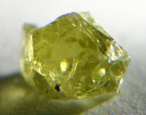 |
|
Pallasit 0,07 ct
Gewicht: 0,07 ct Größe: 0,27 x 0,26 x 0,17 cm Herkunft: Lyon County / Kansas / USA Foto mit freundlicher Erlaubnis von © www.cvs.fi |
 |
|
Pallasit 0,07 ct Report
Report: GIT - The Gem and Jewelry Institute of Thailand Datum: 27. Februar 2015 Foto mit freundlicher Erlaubnis von © www.cvs.fi |
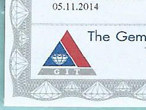 |
|
Pallasit 1,35 ct
Gewicht: 1,35 ct Größe: 0,78 x 0,59 x 0,4 cm Herkunft: Lyon County / Kansas / USA Foto mit freundlicher Erlaubnis von © www.cvs.fi |
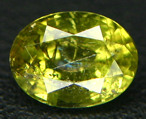 |
|
Pallasit 1,35 ct Report
Report: GIA - Gemological Institute of America Datum: 12. Juni 2013 Foto mit freundlicher Erlaubnis von © www.cvs.fi |
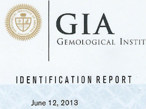 |
⇐ Intro Seite ⇐ Edelsteine